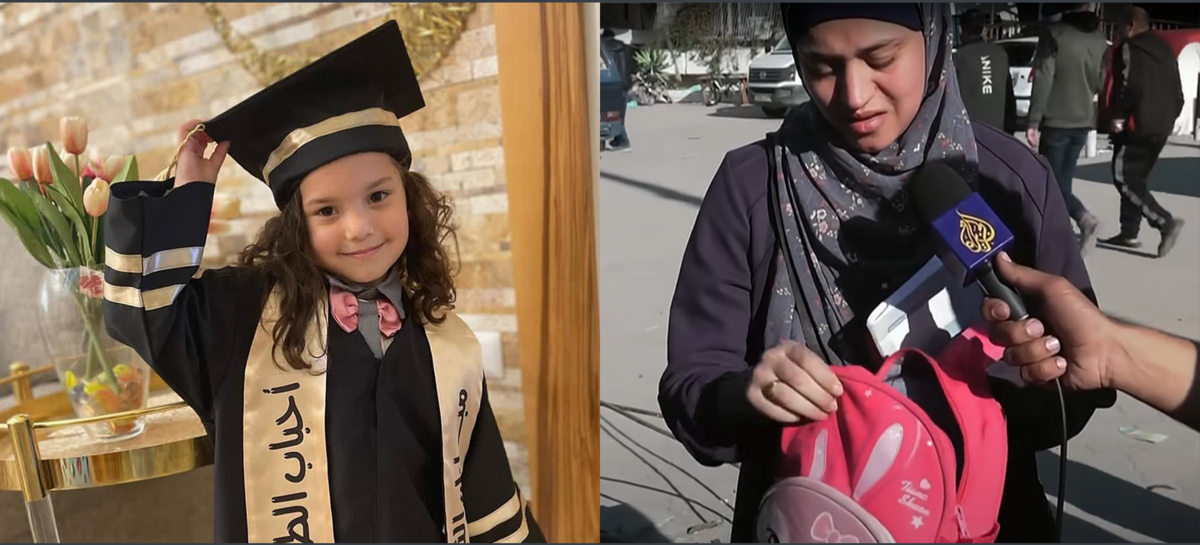Her Highness' Opinion Editorial in Le Point : The Human Cost of War
Doha, 09 September 2024
In late January, among the many awful stories emerging from Gaza, one stood out. It was that of Hind Rajab, killed as she sat in a car surrounded by the bodies of her relatives, clutching her cousin’s mobile phone and pleading for help. Those pleas were recorded. Millions heard them.
Hind was six years old. She was in a car with her uncle and aunt and their three children. Their vehicle was hit by 355 rounds, fired at them from an Israeli tank that could only have been meters away. Two paramedics sent to rescue them were found, dead, in a nearby burnt-out ambulance.
This year’s International Day to Protect Education from Attack has the theme: “the human cost of war”. How do we estimate the value of a human life? Of the lives of little, six-year-old Hind, so brave in the face of extreme violence; of her three cousins, also children; and of her uncle and aunt? Of the two paramedics, who sacrificed themselves to try and save the family? Of the tens of thousands now dead in this horrific aggression?
Hind’s story resonated with protesters all over the world. They sang songs about her, mourned her and celebrated her short life. But Hind is just one among many — so many.
Since 7 October last year, the numbers of children, teachers, academics and students killed in Gaza has soared towards 20,000. More than 93 percent of school buildings have been destroyed or damaged, including those run by UNWRA. Many were occupied by displaced people rendered homeless by the conflict. Some of the structures had even been designed to double as emergency accommodation.
This is the world we live in — one where schools are designed to convert into refugee centers. Under international law, such civilian buildings should not be targeted. And yet, thousands have been injured or killed as they shelter in what should be “safe spaces”.
What price would you put on these lives? What price would you put on your own? What is the “human cost” of this and any war? I cannot answer these questions. My heart is full of frustration, pain and despair.
We can talk of the physical price — the costs, for example, of rebuilding. The billions it will cost to rebuild the infrastructure including schools and universities in Gaza, in Yemen, in Sudan, in Syria, in the Ukraine, in Myanmar… the list goes on. The destruction is boundless. I would say “pointless” – but it is not pointless to those who wreak this havoc. They know that by targeting and destroying these facilities, by killing the teachers and professors and by dismantling the very foundations of education, they annihilate the future for generations. And that is exactly their intention.
What a loss it is. Not only to the families, not only to the children and young people personally, not only to their nations. It is a loss to each and every one of us, no matter where we are in the world. All that potential, all that talent, all that life: those who have lost their lives; those who have lost their ability to study and will never be able to fulfil the promise they held; and those survivors who have been denied their fundamental human right to an education.
This travesty is taking place all over the world. While schools have officially reopened in some parts of Sudan, the reality is that the violence continues and the displacement of millions continues and attacks on education continue. Recent rioting in Bangladesh led to nationwide school closures. In Ukraine, more than 1300 schools are completely destroyed. In Nigeria, the DRC and in Colombia, and in so many countries besides, innocent students pay an incalculable price for bitter division. Their communities will carry the cost of rebuilding and mending broken minds and hearts for decades to come, but without the benefit of educated young people ready to take on the mantle of leadership.
The world watches but does not act. You need only look at Gaza or Sudan, or cast an eye at refugee camps across the globe, to witness the repercussions of the international community’s inaction.
The silence is deafening, but in the midst of my despair, it is young people who keep my hope alive. The students around the world who continue to protest against conflict and suffering are emblematic of the power of education. They recognize their power and use what influence they have to make a difference and to draw attention to injustice: to tell the stories of children like Hind. Some of them will go on to be changemakers in their nations. But that opportunity is denied to so many of their contemporaries, and in the very countries that need their talent and ability the most.
As the challenges to this fragile planet mount — among them climate change, disease and further wars — we all need the talent and ability of every child and young person to be put to good use. We all need them to fulfil their potential. We need them to read, to write, to understand, to communicate, to innovate, to research, to achieve. We need them to go to school, to learn trades, to study for degrees at universities. We need them to teach, to advocate and to lead. Above all, we need them to live.
On the internet, you will find a photograph of Hind Rajab graduating from kindergarten. Smiling, she tips her miniature mortar board hat, looking proudly at the camera.
As Hind died, her mother was waiting for her at the hospital, holding her little pink bag. Inside it was a notebook in which Hind had been practising her handwriting. I wonder what Hind would have become, had she only been allowed to grow up.

Originally published in French: https://www.lepoint.fr/monde/gaza-il-faut-rappeler-le-cout-humain-de-la-guerre-09-09-2024-2569818_24.php#11
